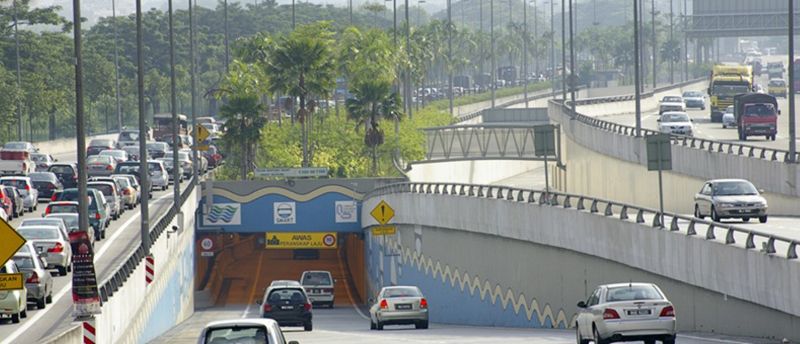KUALA LUMPUR, March 4 — A peak-hour congestion charge and cheaper toll rates in between could incentivise businesses to change work hours to save travelling costs, an environmental activist said.
Workers can clock in much later in the day if companies adjust their operation hours to exploit the lower toll rates, said Anthony Tan, former executive director of Centre for Environment, Technology & Development (Cetdem).
If that happens, which Tan believes it would, a big chunk of the rush hour traffic would spread towards the later part of the day. No more early morning jams (or reduced at least).
“The discounts could drive employers to change working times because it’s cheaper,” Tan said in a phone interview with Malay Mail.
“Who doesn’t want a reward?”
Tan joined other interest groups in welcoming the government’s plan to impose congestion charges and pare some of the city’s toll rates, a move they believe would solve some of the city’s transport problems and ease congestion.
As part of a wider effort to ease living cost pressure, the Prime Minister’s Office said last month that tolls for four major highways will be waived during “off-peak” hours between 11pm and 5am.
For those using the highway outside of the peak period and off-peak hours, they will enjoy a 30 per cent discount of the existing toll rates. The congestion charge for peak hours will be maintained at current toll rates.
Tan said lowering and waiving the rates at certain hours of the day is likely to induce behavioural change through a “reward” system; an incentive for the public to plan their daily travel better, or for businesses to adjust their operations in order to optimise cost.
Citing the logistic business as an example, the activist predicts managers will shift deliveries to between 11pm and 5am to avoid paying toll. This would get most of the slow-paced trucks that operate within the city off the road and free up more lanes during the day time.
“The roads would be freer without the trucks and cause less traffic jam,” he said.
“Less traffic jam means fewer drivers pushing the breaks. That means less carbon emission.”
More public transit use?
Others have touted congestion charges’ benefits to public transport, which they believe would get a boost in the long run.
The current mediocre ridership numbers show the city’s rail and bus services remain largely unfavourable to most KL and Selangor residents.
“Those who don’t really need to be in the city would be discouraged… but yes, the public will use public transport and it will benefit them in the long run,” said Ihsan Zainal Mokhtar, president of the Malaysian Institute of Planners.
“I think it will work positively for public transport encouragement,” said Ajit Johl, National Public Transport Users Association.
But these views are merely predictions. To date, there is no available domestic research to show businesses or the public would factor in toll rates to make decisions.
Official traffic volume numbers provided by the Malaysian Toll Authority showed usage of toll roads in the city increased even when the Najib administration almost doubled the rates in 2014. Those rates are maintained until today.
Tan cited London and Oslo’s success in lessening cars with congestion charges, but every city has unique problems that requires very specific solutions.
Local urban planners have said what worked for others may not necessarily work for KL.
The government announced last month that it planned to acquire four highways in the Klang Valley — LDP, Sprint, Kesas and Smart — within six months.
Finance Minister Lim Guan Eng said the government’s acquisition of the highways would save taxpayers from having to pay RM5.3 billion in compensation to concessionaires if toll rate hikes were to be frozen instead.
* A previous version of this story contained errors which have since been corrected.



















